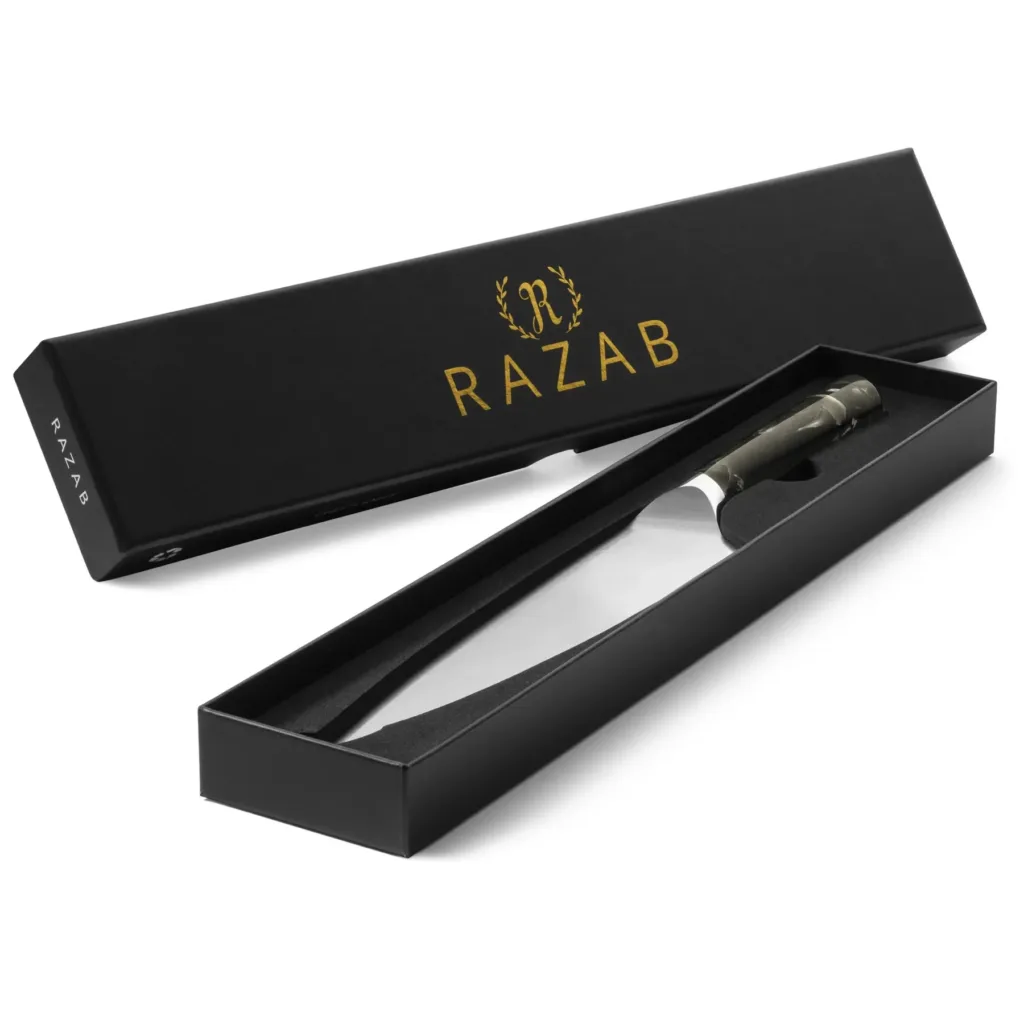Introduction
Japanese culinary tradition is renowned for its precision, artistry, and the masterful techniques employed by its chefs. One of the foundational skills that set Japanese chefs apart is their adept handling of knives. This guide delves into the various grips used by Japanese chefs, providing a detailed exploration of each technique and its applications.
The Essence of Knife Grip in Japanese Culinary Arts
Japanese knives are meticulously designed to offer balance, sharpness, and control. The way a chef holds a knife can significantly impact the efficiency and safety of their cutting technique. Understanding the correct grips is essential for anyone aspiring to achieve the finesse of a Japanese chef.
The Pinch Grip (Blade Grip)
Overview
The pinch grip, also known as the blade grip, is the most prevalent technique among Japanese chefs. This grip involves pinching the blade between the thumb and the side of the index finger, with the remaining fingers wrapped around the handle.
Technique
- Position the Thumb and Index Finger: Place your thumb on one side of the blade and your index finger on the other, just above the heel of the knife.
- Support with Remaining Fingers: The other fingers should rest comfortably on the handle, providing support rather than control.
- Control and Balance: This grip allows for superior control and balance, making it ideal for a variety of cutting techniques, including chopping, slicing, dicing, and mincing.
Advantages
- Enhanced Precision: The proximity of the hand to the blade offers greater control.
- Flexibility: Facilitates a range of cutting motions with ease.
- Safety: Reduces the risk of slippage and accidents.
The Point Grip
Overview
The point grip is another technique favored by Japanese chefs, particularly for tasks requiring high precision. This grip involves placing the index finger along the spine of the knife.
Technique
- Index Finger Placement: Extend your index finger along the spine of the knife.
- Thumb Support: The thumb should rest on the side of the blade or handle, providing additional support.
- Focus on Precision: This grip is ideal for detailed work such as filleting fish, decorative cuts, and slicing sushi.
Advantages
- High Accuracy: Ideal for intricate cuts and detailed work.
- Control: Provides excellent control over the tip of the knife.
The Hammer Grip
Overview
The hammer grip, although less common, is essential for tasks requiring significant force. This grip involves holding the knife handle tightly, similar to holding a hammer.
Technique
- Full Hand Grip: Wrap all fingers around the handle, ensuring a firm grip.
- Maximize Force: This grip is used when cutting through tough materials like bones, dense meat, and hard fruits.
Advantages
- Increased Force: Allows the chef to apply significant pressure.
- Stability: Provides a firm hold on the knife for tough cutting tasks.
The Claw Grip
Overview
The claw grip is not a knife grip but a technique for holding the food being cut. It is crucial for protecting fingers from the blade.
Technique
- Finger Positioning: Curl your fingertips inward, towards your palm, creating a claw-like shape.
- Knuckle Guidance: The knuckles act as a guide for the knife, keeping fingers safe behind them.
- Thumb Tucking: Ensure the thumb is tucked behind the food, away from the blade.
Advantages
- Safety: Prevents fingers from being accidentally cut.
- Control: Offers a stable hold on the food item, improving cutting accuracy.
Check: Chef’s Knife
Additional Tips for Safe Knife Handling
- Stable Cutting Surface: Always use a non-slip cutting board. Placing a damp cloth underneath can prevent movement.
- Consistent Practice: Regular practice will make these grips feel more natural.
- Awareness: Always be mindful of finger placement relative to the blade.
Final Thoughts
Mastering the art of knife grips is essential for any chef aspiring to the precision and skill of Japanese culinary experts. The pinch grip, point grip, hammer grip, and claw grip each offer unique benefits tailored to specific tasks. By practicing these techniques, chefs can enhance their control, safety, and efficiency in the kitchen, embodying the meticulous craftsmanship that defines Japanese cooking.

